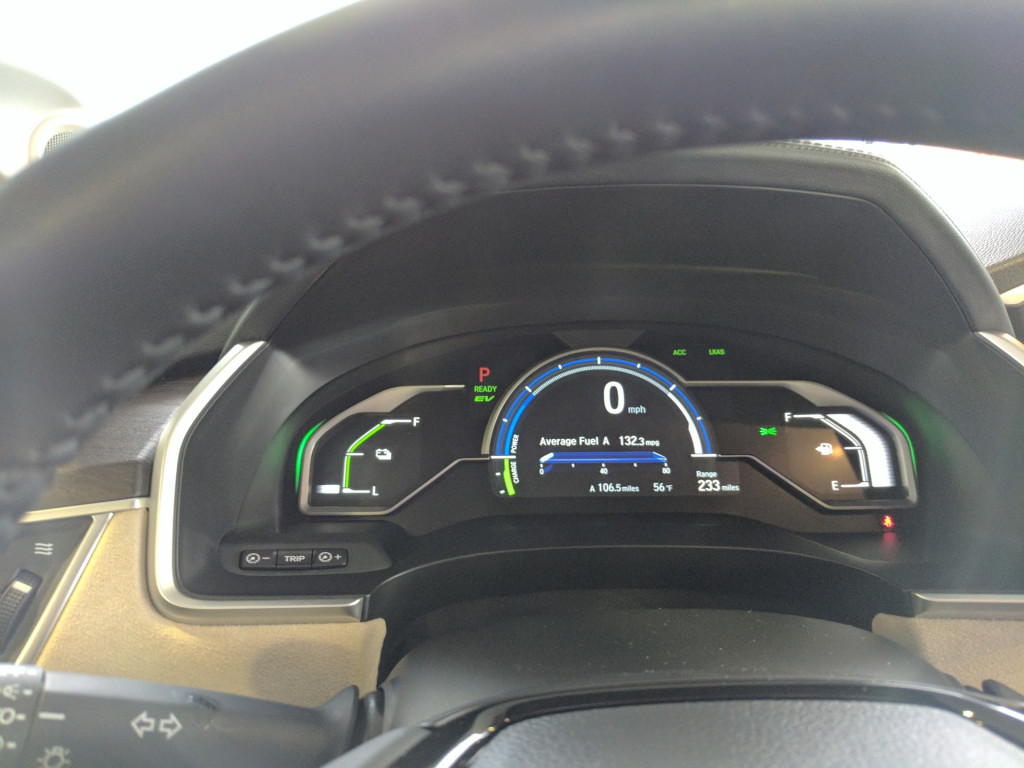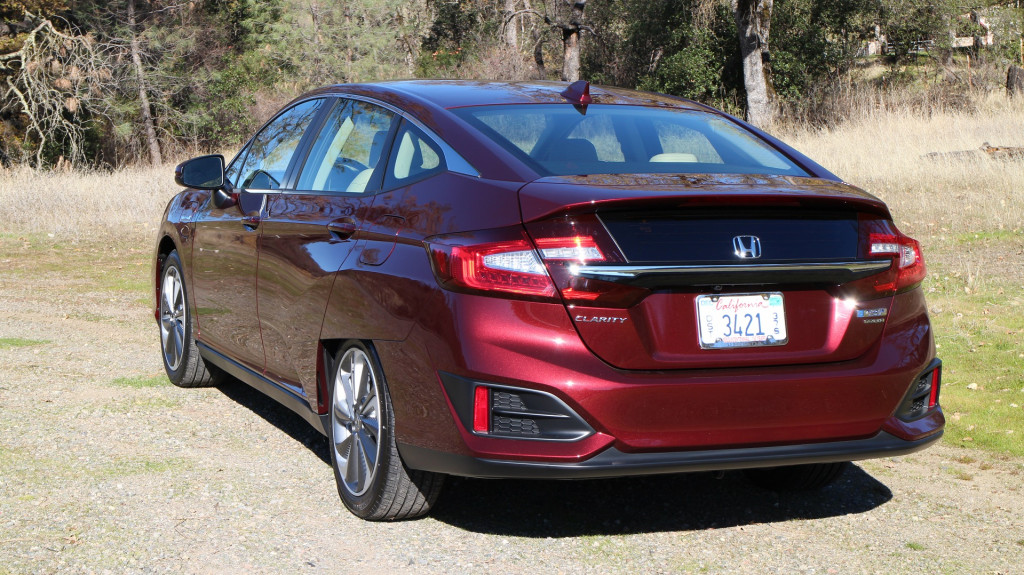I’ve owned two Chevrolet Volts, an early 2011 mannequin and, at the moment, a second-generation 2017 model. I’ve beloved them each.
They’re glossy, sprightly, and have sufficient electrical vary to cowl most driving. For longer journeys, the gasoline engine kicks in when the cost runs out. The Volt, to me, is the right compromise between electrical and gasoline, conventional and cutting-edge—and the automotive I virtually all the time suggest when folks ask me what electric-car they need to purchase.
Three options set the Volt aside from—and for my part means above—different plug-in hybrids such because the Toyota Prius Prime and Ford Fusion Energi.
READ THIS: 2018 Honda Clarity Plug-In Hybrid: weekend drive review
First, the Volt has a a lot larger battery—18.4 kwh, good for an EPA-rated vary of 53 miles. Different plug-in hybrids have smaller batteries that sometimes restrict electrical vary to round 20 miles—and within the case of the early Prius plug-ins, a pitiful 11 miles.
Second, the Volt has a a lot larger electrical motor—149 horsepower and 298 foot-pounds of torque. That torque quantity is greater than double the electrical oomph of the Prius Prime and Fusion Vitality.
And third, the Volt makes use of a (principally) series-hybrid powertrain. Which means the electrical motor drives the wheels just about on a regular basis. When the battery runs out, the Volt’s gasoline engine kicks in as a generator and retains the battery charged as much as energy the electrical motor.
Because of this, the Volt driver all the time enjoys that chic electrical torque, even in gasoline mode.
Puny parallels
The parallel drivetrains of different plug-in hybrids work in another way.
Generally, the gasoline engine and a small electrical motor commerce off or pair up as essential to drive the wheels. The electrical motor can sometimes deal with light acceleration and reasonable speeds by itself, however when extra energy is required, the gasoline engine jumps in to assist drive the wheels—even with a full battery cost.

2017 Toyota Prius Prime and 2017 Chevrolet Volt with Inexperienced Automobile Experiences editor John Voelcker
Brief vary, little torque, burning gasoline even when the battery is totally charged—why would anybody put up with these shortcomings after they may purchase a Volt?
It is all the time puzzled me that, even after the Volt pioneered the long-range series-hybrid means again in 2011, nobody else adopted
Enter the Readability
Lastly, in 2018 the Volt gained a real rival—a collection hybrid with an enormous battery and an enormous electrical motor. And with the status and advertising and marketing energy of Honda behind it, the 2018 Readability Plug-in Hybrid has the potential to be a star participant on the electric-car scene.
The 2 vehicles’ numbers are very related.
The Readability Plug-in Hybrid has an EPA electrical vary of 48 miles, simply shy of the Volt’s 53.

2018 Honda Readability Plug-In Hybrid drive, Napa Valley, Caifornia, Dec 2017
In gasoline mode, each the Readability Plug-in Hybrid and the Volt get 42 mpg total.
The Readability Plug-in Hybrid has a bit extra electrical energy than the Volt (181 vs 149 hp) however much less electrical torque (232 lb-ft vs 298).
READ THIS: 2018 Honda Clarity PHEV revisited: is this the car Bill Clinton wanted built?
Their costs are very related: a base value together with vacation spot of $34,295 for the Readability Plug-in Hybrid, $34,095 for the Volt.
On paper, the Readability Plug-in Hybrid and Volt actually diverge in solely two main areas: measurement and physique fashion. The Readability is assessed as a mid-size sedan, the Volt a compact hatchback.
Numbers apart, I used to be desperate to test-drive a Readability Plug-in Hybrid and to see if my beloved Volt was about to be dethroned as “King of the Plug-In Hybrids.”
Supplier demo
I headed to my native Honda seller to drive the Readability.
Not an effective way to do a radical analysis, to make sure. However it might let me get a primary really feel for the automotive—in addition to an opportunity to see if mainstream sellers are beginning to transfer past ignoring electrical vehicles, which I’ve seen so typically prior to now.
So I instructed the seller I used to be testing the Readability as a potential different to my Volt when my lease expired.

2017 Chevrolet Volt in Vancouver, BC, Canada
As I pulled into the seller’s lot with my college-age daughter Callie (who really drives my present Volt more often than not), I used to be astonished and delighted to see a Readability Plug-in Hybrid displayed proper out entrance in a featured place.
Maybe Honda sellers have seen the electrical gentle finally?
Not this one. As soon as we bought inside, the salesperson was unable to discover a Readability brochure. After which, as we bought into the demo automotive for the take a look at drive, it turned out the battery was utterly discharged, so we may solely drive it in gasoline mode.
CHECK OUT: 2016 Chevrolet Volt: Gas Mileage Review
No less than the salesperson knew the right way to flip the automotive on.
The gas-mode-only take a look at drive did reveal a few issues.
First, I seen that the regenerative braking was weak. The texture was just about the identical as a traditional automotive. The Readability Plug-in Hybrid does have a regen paddle on the again of the steering wheel, however its impact was barely noticeable.
Sturdy regen is considered one of my favourite issues concerning the Volt (and, to a fair better diploma, my Tesla Mannequin S). So in my e book, this was an enormous strike towards the Readability Plug-in Hybrid.
Callie additionally famous the regen distinction instantly and gave it the same thumbs-down verdict. (That’s my lady!)
The automotive’s acceleration additionally felt sluggish in comparison with the Volt. And to my ear, the gasoline motor appeared slightly louder than the Volt’s in gasoline mode, surging erratically up and down in a means that’s oddly disconnected from the gasoline pedal. (The Volt does this as nicely; it’s simply not as noticeable.)

2018 Honda Readability PHEV 106.6 miles at 132.3 MPGe
EV mode
I made a second go to to the identical dealership to take a look at the Readability Plug-in Hybrid’s EV mode. Though the salesperson on this second drive had by no means been in a Readability Plug-in Hybrid earlier than and knew nothing about it, not less than the battery was charged.
In EV mode, my driving impression was just about the identical: sluggish acceleration and weak braking regen.
READ MORE: Can Honda break through buyer confusion about plug-in hybrids?
Worse, I discovered that in arduous acceleration in EV mode, there’s a detente within the accelerator, past which the gasoline motor kicks in—all of the sudden and loudly. The primary time I pulled out to go one other automotive, it sounded just like the 103-hp inline-4 was straining for mercy—a startling distinction to the easy hum of the Volt at full bore.
All-in-all, I used to be disenchanted within the Readability Plug-in Hybrid driving expertise. Sluggish, no regen to talk of, and the gasoline engine thrashing away each time I requested for a little bit additional energy.
The trip was easy and stable, fairly akin to the Volt’s. I didn’t get an opportunity to push the agility envelope, nevertheless it felt effective in regular driving.
Again seat room
There’s one place the Readability Plug-in Hybrid kicks the Volt’s butt: inside.
The unique Volt had solely two seats in again; the present mannequin has perhaps two and a half. The center-seater just about needs to be a child.
However the Readability Plug-in Hybrid has a roomy rear seat space that can simply match three adults. Knee and head room are clearly superior to the Volt’s.
I’d say the Readability Plug-in Hybrid’s inside is a bit nicer as nicely.

2018 Honda Readability Plug-In Hybrid
By way of cargo room, the Readability Plug-in Hybrid simply beats the Volt on the numbers sport, 15.5 to 10.6 cubic toes.
However in the true world of utility, the Volt’s hatchback format and fold-down rear seats are an enormous plus, not less than in my way of life.
In my previous 2011 Volt, I recurrently loaded in my full-sized mountain bike (with out eradicating the entrance wheel) and our golden retriever concurrently. In three years and 35,000 miles of Volt-driving, I by no means as soon as wished I had extra room again there.
I didn’t carry the bike or the canine alongside for a loading take a look at of the Readability Plug-in Hybrid with the rear seats folded down. However the trunk opening of the Readability Plug-in Hybrid regarded like a mail slot subsequent to the Volt’s yawning hatchback.
Backside Line
For me, the decision is evident: the Volt stays “King of the Plug-in Hybrids.”
However then I’m an electric-car nut who savors acceleration and regen. The concept of burning gasoline to get full efficiency in EV mode offends me. I don’t carry rear-seat passengers fairly often, however I recurrently slot in cumbersome gadgets with the rear seats folded down.
In case you’re simply searching for a really environment friendly and cozy automotive, and your back-seat passengers’ knee room takes priority over the driving expertise, the Readability Plug-in Hybrid is a effective selection.

2018 Honda Readability Plug-In Hybrid drive, Napa Valley, Caifornia, Dec 2017
And the Honda seller I visited is providing a reasonably good lease deal on a base Readability Plug-in Hybrid: $1,195 down and $259 a month for 39 months.
That’s proper on par with Chevy’s present lease deal on a base 2018 Volt: $1,439 down and $259 a month.
GM and Honda competing head-to-head on a plug-in automotive. I find it irresistible.






